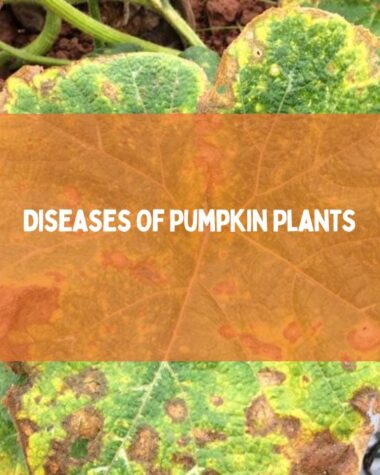Pumpkins Grow Faster may include selecting the right pumpkin variety, providing the proper environmental conditions, such as adequate sunlight and moisture, and using fertilizers and other treatments to promote healthy plant growth.
Pumpkins are a popular crop for fall decoration, cooking, and baking. However, waiting for pumpkins to grow can be a time-consuming process. If you’re eager to harvest your pumpkins sooner, there are several things you can do to help them grow faster.
This article helps you make your pumpkins grow faster.
9 Ways To Make Pumpkin Grow Faster

These ways will help you create an optimal growing environment for your pumpkin plants, resulting in faster growth and a bountiful harvest.
Whether you’re a seasoned gardener or a beginner, these tips will help you get the most out of your pumpkin patch.
1. Start With Healthy Pumpkin Seeds
Choose the biggest seeds and clean off the pulp before planting them on the ground. Plant the seeds in a full-sun spot after the last frost and space them 2 to 5 feet depending on the variety.
Pumpkin seeds need space to grow; also provide space so that they thrive fully.
Related Reading
- How To Grow Mini Pumpkins From Seeds?
- Maximizing Your Harvest With the Best Fertilizer For Pumpkins
- How To Grow Mini Pumpkins From Seeds?
- How And When To Sow Pumpkin Seeds?
2. Start Seeds Indoors

To start pumpkin seeds indoors and make pumpkins grow faster, sow the seeds in peat pots for 3 to 4 weeks before planting them out.
The indoor temperature should be between 66°F to 85°F (18–29°C) until germination, and the soil temperature should not be below 66°F (18°C). Loosely pack some potting soil in a cup or a container with holes for drainage, and plant two to four pumpkin seeds.
Place seed pots under artificial lights or maintain soil moisture. Once the seedlings have grown their second set of leaves, transplant them into larger containers or outdoors.
3. Provide Adequate Sunlight
To make pumpkins grow faster, provide adequate sunlight. Pumpkin plants need at least 6 to 9 hours of full sun regularly to grow optimally. Place them in an area that gets 8-10 hours of sun to ensure they thrive.
If full-day sun is not possible, somewhere that gets at least 6 hours of direct sun a day can work.
4. Ensure Proper Soil Conditions
To make pumpkins grow faster, ensure proper soil conditions. Before planting, mix in a good amount of organic material, such as compost or peat moss, and ensure that the soil pH is slightly acidic.
The pH should be between 6 and 6.5 for the healthiest growth. If the soil pH is not within this range, amend it with lime or sulfur.
Get the soil ready by mixing a 3-inch layer of garden soil or potting mix to provide rich soil and a good deal of fertilizer.
5. Mulch Around The Plants
Mulching helps to lock in moisture, build soil, and keep weeds at bay. It also keeps the pumpkins clean and prevents decay as they grow since they aren’t in direct contact with the garden soil.
Add mulch around the pumpkins when they are a few inches tall, but avoid covering the pumpkin plant stem. Use straw, leaves, or grass clippings to mulch your pumpkins. Organic mulch can also work if you choose not to apply it.
6. Provide Consistent Water

Pumpkins require more water than many other plants, and they need a constant supply of available moisture during the growing season. Water deficiency or stress, especially during the fruiting stage, can lead to poor quality and yield.
Water the pumpkins deeply in the morning and on very hot afternoons, especially during fruit sets. Avoid watering foliage and fruit unless it’s a sunny day to prevent dampness that invites rot and disease. Use a small tank to continuously provide water to the roots.
7. Fertilize Regularly
Pumpkins require a balanced fertilizer that is high in both potassium and phosphorus. Nitrogen is also essential for pumpkins’ green growth, and it should be added in the early growth stages.
Apply a weekly nitrogen-heavy fertilizer early in the growing season to produce a healthy plant. Watch out for signs of over-fertilizing with phosphorus, such as yellowed leaves around the edges.
Pumpkins require organic matter, slow and deep watering, and a balanced fertilizer. Fertilize the soil as needed to ensure the pumpkins grow optimally.
8. Control Pests And Diseases
Pumpkins are susceptible to pests and diseases that can affect their growth and yield. Common pumpkin pests include aphids, cucumber beetles, and squash bugs.
Insecticides such as pyrethroids, pyrethrins, carbamates, or organophosphates can be used to control these pests. Add mulch around the pumpkins to lock in moisture and fend off any pests that may dig up the plants.
Control weeds with mulch to prevent pests and diseases. Be careful not to overwater the pumpkins, as damp conditions can make rotting a much greater possibility. Use fungicides to treat downy mildew, which is a common pumpkin disease.
9. Prune The Vines
It’s important to trim the vines with pruning shears to around 10–15 feet beyond the last pumpkin fruit on the vine. Main vines should be pruned when they reach beyond the last fruit you are leaving on the plant, and secondary vines (or runners) should be pruned as well.
Use a sharp and clean pair of pruning shears to snip the vines, but never cut the base of the main pumpkin vine. Pruning the vines can help redirect the plant’s energy to the fruit, resulting in larger and healthier pumpkins.
Related Reading
- Indoor Carrot Garden: Tips For Growing Carrots Indoors
- 10 Zucchini Growing Tips for Growing Healthy and Productive Plants
- 5 Effective Strategies to Control Weeds While Growing Cucumbers
- Tips to growing Incredible Tomatoes by experts
Conclusion
If you want to speed up the growth process and increase the yield of your pumpkin plants, there are several things you can do to help them grow faster. These include choosing the right pumpkin variety, providing adequate sunlight and moisture, ensuring proper soil conditions, using fertilizers, controlling pests and diseases, pruning the vines, and providing support to prevent damage.
By following these tips, you can create an optimal growing environment for your pumpkin plants, resulting in faster growth and a bountiful harvest.







